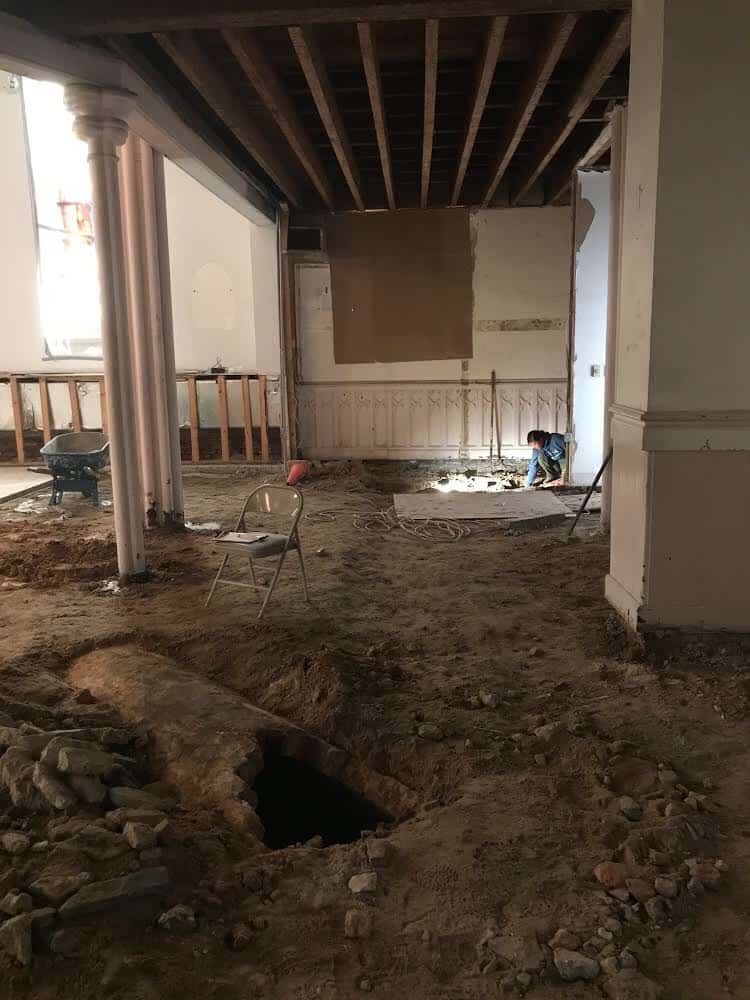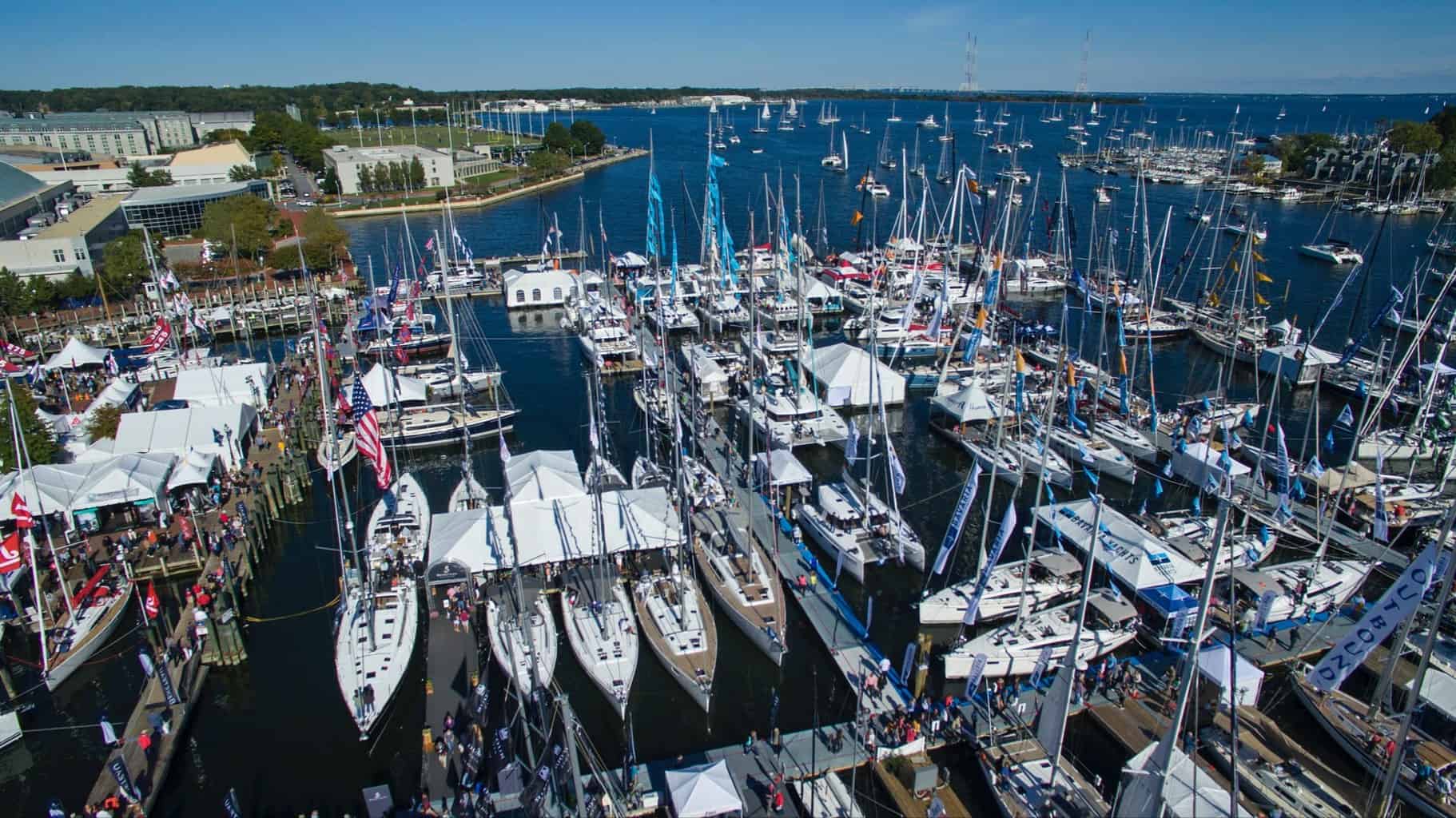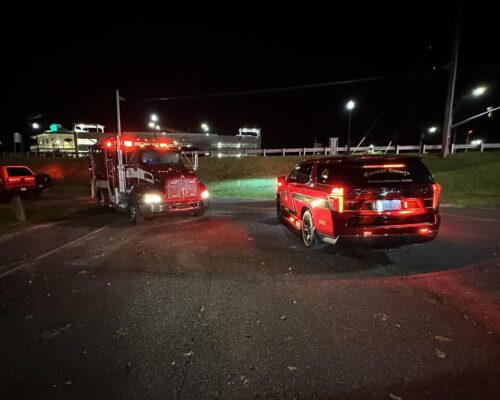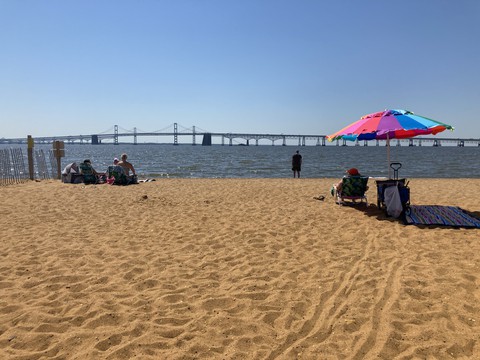A tunnel and crypts found at a downtown Norfolk church have regional historians and archaeologists buzzing about their role in the city’s past, including the possibility of a connection to the Underground Railroad.
During recent restoration work at the Basilica of St. Mary of the Immaculate Conception, a 40-foot section of a brick and concrete tunnel and three brick crypts were discovered.
The Basilica was built in 1857-1858 to replace St. Patrick’s, a Catholic church that burned down.
Cassandra Newby-Alexander, a dean and history professor at Norfolk State University, has been onsite to visit the archaeological finds. She says that the tunnel was likely part of Norfolk’s waterworks, used to transport drainage of some sort.
“Its trajectory would have taken it from a waterfront to one of Norfolk’s creeks that once was nearby to the black community and to the Colored Methodist Church (now called St. John’s AME Church).”
As for the three crypts, two have been dated back to the mid-1800s, and the largest is a bit older, likely from the beginning of that century, she says.
David Brown is a professor at The College of William & Mary and co-director of the Fairfield Foundation, an archaeological and preservation organization taking part in the restoration efforts. He agrees that the crypts probably predate the church’s construction.
Moving forward, “the hope is that we’ll come up with some plan that will allow the church to move forward with its restoration without producing harm to any of those archaeological features,” says Brown, speaking for the groups working together on the restoration. He says the team will investigate the crypts for human remains and hopefully memorialize the site with a marker or even a glass floor.
Newby-Alexander, who studies the history of Norfolk and the Underground Railroad, thinks these discoveries present an opportunity to dig deeper into local history.
She says that the church, which is predominantly African-American, was near both the Colored Methodist and First Baptist churches, as well as the free black community at the time.
“My research has found a number of freedom seekers who successfully escaped from Norfolk were members of the Methodist church. It is speculative, but would be consistent with what historians know about the Underground Railroad operations,” she says.
“The Underground Railroad used what was at their disposal to help thousands of freedom seekers obtain freedom. If a pipe/tunnel ran the length of the black community to an access point on the waterfront, it is entirely expected that people would use this pipe/tunnel as a portal to travel in secret and beyond the gaze of the numerous night watchmen who were hired to prevent escapes.”
Brown agrees, saying that he can’t rule out the possibility that the structure may have been used as part of the Underground Railroad. “The tunnel is certainly not designed to facilitate the escape of people,” he says. However, because enslaved Africans were using any means at their disposal to escape to freedom, “going through a tunnel would not have been out of the ordinary.”
Historians have long recognized Norfolk as one of the southern points people would flee to, says Brown, and like Newby-Alexander, he thinks just the tip of the iceberg has been uncovered regarding the city’s role in the Underground Railroad and the church’s function in the lives of their community members.
“I think it brings to people’s attention stories that were largely forgotten or that were never associated openly with these places.”
Newby-Alexander says there’s not a lot of archaeological evidence of Underground Railroad activities and burials in Norfolk– but finds like the tunnel and crypts are sure to uncover more of the city’s past.
“This discovery promises to lead to a deeper and newer understanding of the city. The discoveries are just beginning.”
-Laura Adams Boycourt




